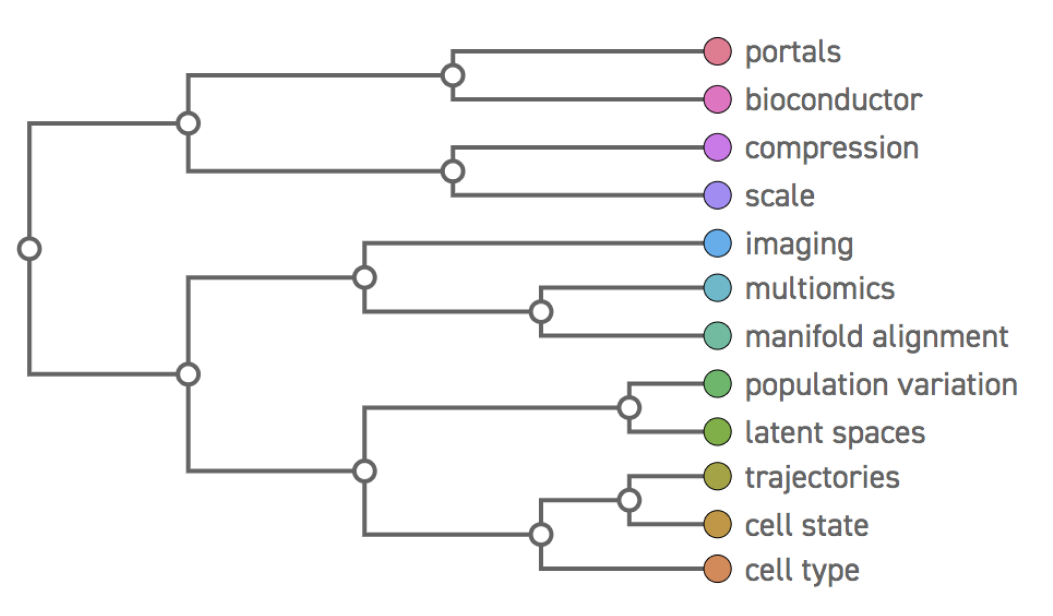Collaborative Computational Tools for a Human Cell Atlas

Showing 85 results
Projects
The goal of the Human Cell Atlas project is to create a shared, open-reference atlas of all cells in the healthy human body as a resource for studies of health and disease. This global endeavor will generate a substantial quantity of molecular and imaging data across a wide range of modalities and spatial scales. To analyze, interpret, and disseminate these data, these projects focus on creating new computational tools, algorithms, visualizations, and benchmark datasets. In the spirit of open, collaborative development, researchers worked together and shared progress with each other to evaluate the strengths of different approaches. Learn more.
Bioconductor
Bioconductor is a widely-used collection of open-source software packages for the genomics community, and these projects focus on enabling these tools to work with Human Cell Atlas data, and better handle the scale and complexity of the data likely to be encountered.
Cell States
Projects that aim to determine how a particular cell type can vary in gene expression related to stages of the cell cycle.
Cell Types
Projects focused on the fundamental problem of defining a cell type from single-cell RNA sequencing data, possibly alongside other data modalities, including both algorithmic and ontological challenges.
Compression
These projects leverage information theory to design better compression and feature extraction methods for single-cell RNA sequencing data, enabling cheaper storage of larger datasets, and possibly new insights into the structure of the data itself.
Imaging
Approaches using imaging map the spatial distribution of gene expression within cells and across cells within tissues. Computational tools here focus on new algorithms for visualizing and extracting features from these data, and sharing them with other researchers.
Latent Spaces
This group of projects models the diversity of measurements obtained from single-cell RNA sequencing as arising from some latent, low-dimensional representation, and focuses on how to best learn and interpret that representation.
Manifolds
These projects use concepts from manifold learning to better integrate datasets coming from a variety of sources, normalizing across variability due to noise in order to highlight the signal.
Multiomics
Projects that incorporate different characteristics of cells, like protein expression, epigenetics, and morphology, into the definition of cell type.
Populations
Approaches to population-scale single-cell genomics, including new experimental techniques for higher-throughput measurements, and approaches to solving the related computational challenges.
Portals
Projects building portals to data and analyses, including interactive user experiences for browing datasets and interacting with analysis pipelines, as well as novel visualizations to make new kinds of algorithms easier to understand.
Scale
These projects leverage new distributed computing methods to enable large-scale computation on the massive single-cell RNA sequencing datasets that the Human Cell Atlas will generate.
Trajectories
Projects that aim to understand the lineages of cell differentiation — the paths between cell types — based on patterns in gene expression.
Sorry, there are currently no results that match those criteria. Please try selecting fewer filters or clearing all search terms.



